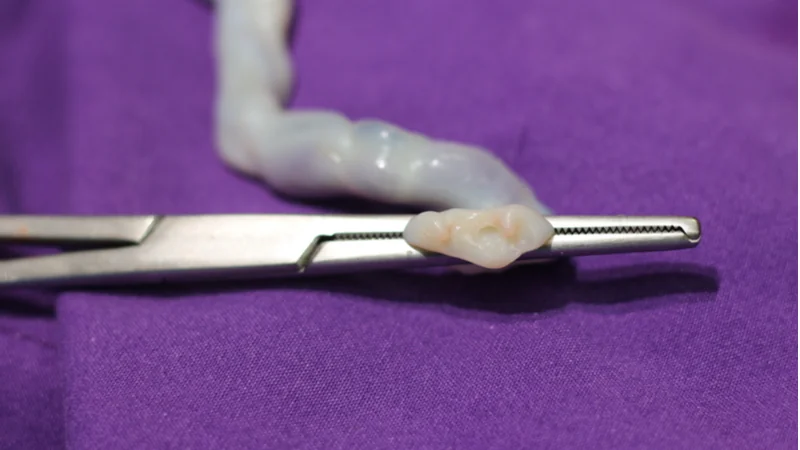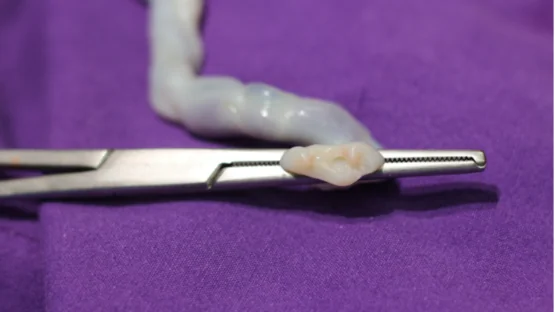Researchers have found that intramuscular injections of plasma concentrate made from human umbilical cord blood improve various health biomarkers and decrease biological age in elderly people [1].
Old blood, young blood
Circulating proteins have a significant impact on our health, and blood plasma transfusion is increasingly used against inflammatory conditions as well as some autoimmune and genetic diseases [2]. Basically, plasma transfusion enables physicians to alter the concentration of interesting molecules in the blood.
In recent years, Michael and Irina Conboy, along with other researchers, have experimented with blood/plasma exchange in the context of longevity [3]. Their continuing research has shown that heterochronic parabiosis (blood exchange between old and young animals), as well as plasma transfusion and even dilution of old plasma [4], alleviate various aspects of aging and decrease biological age as measured by methylation clocks.
Plasma in a shot
This news study takes the concept one step further. First, it was done in humans, which is still a rare and welcome occurrence in the longevity field. Second, rather than blood or plasma transfusion, participants were given weekly shots of plasma concentrate made from umbilical cord blood. The list of authors is interesting as well, as it includes researchers from the University of Texas, Altos Labs, Epigenetic Clock Development Foundation, and the longevity-oriented/transhumanist non-profit Better Humans. The aim of the study was to assess the safety of the treatment and multiple health biomarkers, including epigenetic age.
The study was modestly sized, counting 18 participants with a mean age of 74 who were given a weekly intramuscular injection of 1 ml of a plasma concentrate for 10 weeks. Each shot was derived from 100 ml of plasma, meaning that every participant received an equivalent of 1 liter of umbilical cord plasma over the course of the study.
Umbilical cord blood is used in medicine mostly as a source of hematopoietic and mesenchymal stem cells. Plasma, of course, is the cell-free blood fraction, but umbilical cord plasma is thought to contain many beneficial factors, including factors secreted by stem cells. As the researchers note, umbilical cord plasma treatment can potentially recapitulate some of the benefits of stem cell therapy without actually transplanting living cells. One study showed that human umbilical cord plasma rejuvenates hippocampus in mice [5].
Younger by almost a year
Changes in 10 of the 78 measured biomarkers reached the level of statistical significance after adjusting for multiple measurements. Most notably, markers of kidney function (creatinine and glomerular filtration rate) were greatly improved. Since the foremost goal of the study was to assess safety, the researchers also measured immunoglobulin levels, a marker of immune response. Repeated injections of a protein-containing substance can elicit an immune reaction; however, the levels of most immunoglobulins were actually reduced by the treatment, and no significant changes in lymphocyte numbers were observed.
The researchers looked for changes in biological age using several well-established methylation clocks. However, only one of them, GrimAge, showed a significant reduction of biological age: 0.82 years on average. Although this is a bit disappointing, GrimAge, which predicts morbidity and mortality risk in humans, is known as one of the best clocks. While the study lacked the statistical power to reliably detect sex differences, the researchers did include this data, which indicated that the GrimAge estimates decreased in women only.
Among the elements of GrimAge, methylation of the genes producing the proteins cystatin C and GDF15 was altered the most. Cystatin C levels in plasma are used to assess kidney function, so this finding is consistent with the improvement in creatinine levels and glomerular filtration rate. However, higher levels of cystatin C have also been associated with other age-related conditions, including chronic obstructive pulmonary disease and cardiovascular disease. GDF15 blood levels are known to rise with age and are significantly associated with cardiovascular and all-cause mortality.
The treatment also decreased Shannon entropy of methylation. Since methylation governs gene transcription, an increase in DNA methylation entropy means that methylation and demethylation events occur more randomly – probably causing the wrong genes to be transcribed or silenced.
Conclusion
Despite its promise, plasma transfer is invasive since it requires intravenous administration and is otherwise logistically demanding. Shots of plasma concentrate might be a much more convenient way to deliver at least some of the same benefits. As the researchers note, human umbilical cord plasma is an ethical and relatively abundant source of rejuvenating factors, including the secretome of stem cells. However, to determine the extent of the benefits that plasma concentrate injections confer, more robust clinical trials are needed.
Literature
[1] Clement, J., Yan, Q., Agrawal, M., Coronado, R. E., Sturges, J. A., Horvath, M., … & Horvath, S. Umbilical cord plasma concentrate has beneficial effects on DNA methylation GrimAge and human clinical biomarkers. Aging cell, e13696.
[2] Bobati, S. S., & Naik, K. R. (2017). Therapeutic plasma exchange-an emerging treatment modality in patients with neurologic and non-neurologic diseases. Journal of clinical and diagnostic research: JCDR, 11(8), EC35.
[3] Conboy, I. M., Conboy, M. J., Wagers, A. J., Girma, E. R., Weissman, I. L., & Rando, T. A. (2005). Rejuvenation of aged progenitor cells by exposure to a young systemic environment. Nature, 433(7027), 760-764.
[4] Mehdipour, M., Skinner, C., Wong, N., Lieb, M., Liu, C., Etienne, J., … & Conboy, I. M. (2020). Rejuvenation of three germ layers tissues by exchanging old blood plasma with saline-albumin. Aging (Albany NY), 12(10), 8790.
[5] Castellano, J. M., Mosher, K. I., Abbey, R. J., McBride, A. A., James, M. L., Berdnik, D., … & Wyss-Coray, T. (2017). Human umbilical cord plasma proteins revitalize hippocampal function in aged mice. Nature, 544(7651), 488-492.





